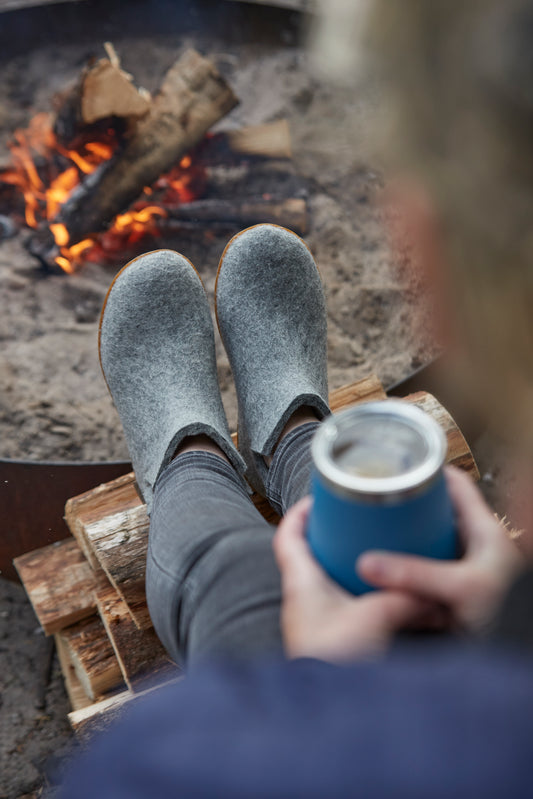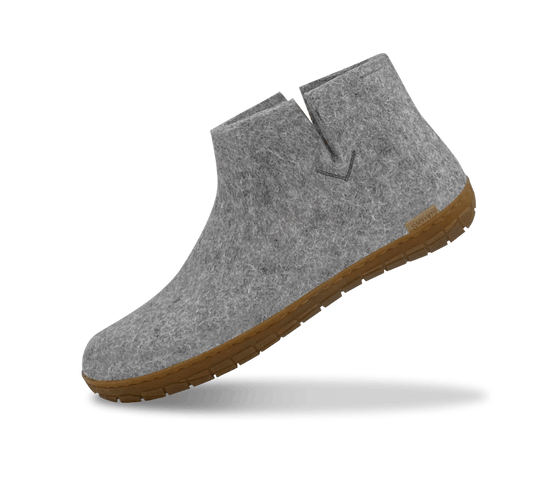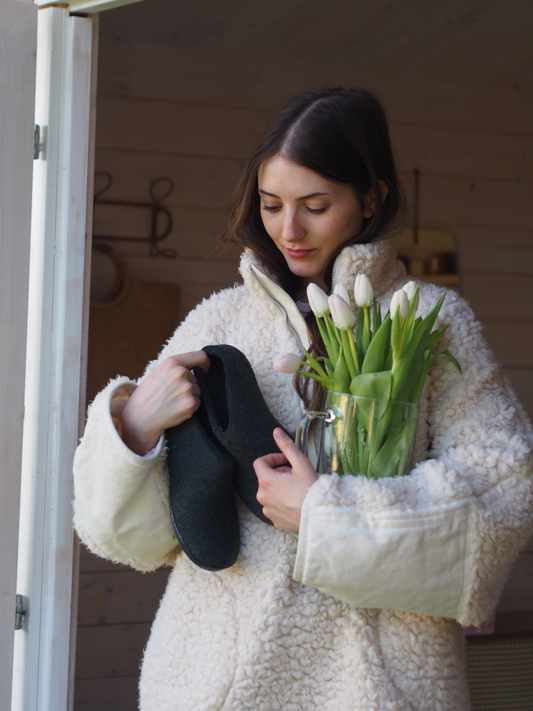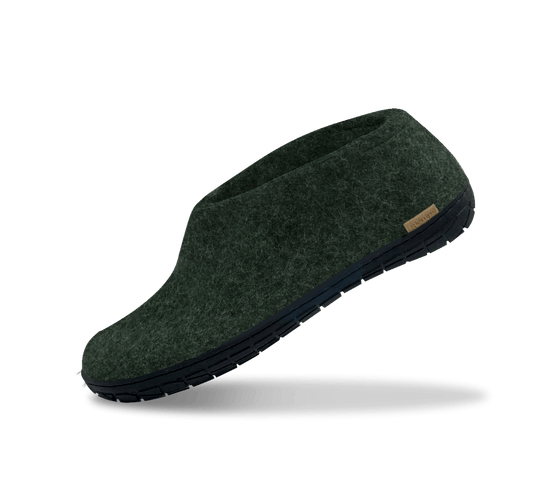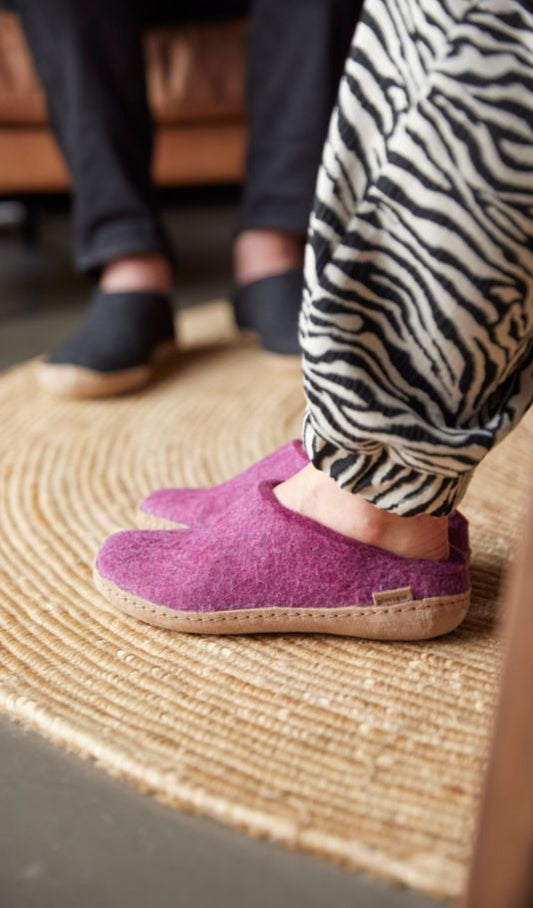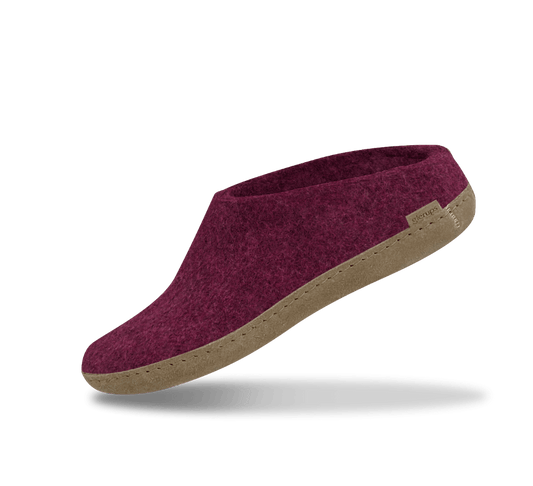At glerups, our story has always been connected to nature and the materials we find there. It all began when Nanny began crafting felted slippers for family and friends made from wool from her Danish farm’s own Gotland sheep.
A lot has changed since the company was officially founded in 1993, but a few things haven’t. The Glerups name still stands for comfort and craft. The company headquarters is still on that family farm. And the deep connection to nature remains - respecting the world we live in has always been a core part of our DNA.
Glerups are known for their exceptional comfort. This is due to the foot-shaped and unique design, combined with the softness and warmth of the wool. The designs are based on a long tradition of hand felting and this craft has been translated into glerups’s industrial production. Parts of the production are still done manually and require a manual dexterity which cannot be replaced by machines.
Glerup is a family name, and the founder has put her name on the products in order to signal that we vouch for them.
“It’s a privilege to be able to follow the progress of the company even today, and both Ove and I are happy that The Farm is still centre of the glerups spirit and quality.”
With values of quality craftsmanship and deep respect for human, nature and animal, the vision is to work in line with these values from farm to foot.

The softness and warmth of wool
It has always been our objective to produce all our products with respect for human, animal and nature.
Glerups may have started with wool from the family’s own Gotland sheep, but we are not ones to stand still! Over the years glerups perfected the wool mix by blending Gotland wool with soft quality wool from New Zealand farmers who meet our high standards for consistent quality and humane animal welfare.
We work with our farmers every step of the way and follow each pair of glerups from the sheep to your feet.
The wool is washed in soft water, then carded and felted. The felt is formed into socks, which are steam-felted for a perfect fit before soles are glued and then sewn on, for long lasting durability.
Many people use wool to keep warm, but in fact wool can also help keep the body cool. That's because wool absorbs up to 30% of its weight in moisture without feeling damp. This significantly outperforms synthetic fibres or cotton.
No matter how much you perspire you can stay feeling dry and temperature regulated.
“Wool has a natural ability to adapt to the body's needs in all weather conditions,” says Hadleigh Smith of the New Zealand Merino Company, which supplies our New Zealand wool to glerups. “That's why it boosts your overall well-being year-round, inside and out.”
Leather soles
Glerups’ leather soles skins come from a European tannery which meets the strict environmental requirements of the EU. The skins are tanned using the most modern and environmentally friendly methods - they are free of PCP, AZO dyes and Chromium-VI.
Our leather labels are made of leftover leather pieces from our production. We love reducing waste - especially when it also is an elegant design upgrade. We also upcycle leftover wool into new production, giveaways and point of sale material.
Rubber soles
In 2018, we added rubber soles to our range. The rubber we use meets the strict environmental requirements of the EU. The rubber soles are designed and constructed with a special pattern that provides good grip on many different surfaces.
The colours of nature
Our colour range is made of beautiful Scandinavian and natural colours. We develop new colours when it makes sense and the time is right. For example, the Forest colour was added in 2018, Inspired by the surroundings and the nature around our headquarters and found Nanny and Ove’s home. This way, you can buy your favourite glerups colour for many years - and there is always room for adding more colours to your selection of glerups.
Watch the video on how a pair of glerups are produced - click here


